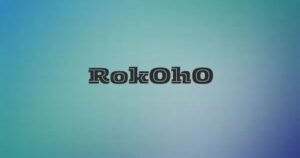Überzetsen: Choosing The Right Translation Service For Your Business
In our increasingly international world, translation, or “überzetsen” as it is known in German, is vital. Without it, our access to global literature, news, science, and intercultural dialogue would be severely limited. But what exactly is meant by überzetsen, This expression, Germanic in origin, sums up the essence of translation or meaning transference.
The History of Translation
Translation has been a vital part of human communication for thousands of years. Translation has a long and rich history; it began with the translation of holy texts by prehistoric societies and continued with scholars translating Greek and Latin manuscripts in order to preserve knowledge.
Evolution Through the Ages
Translation changed over ages, according to both technology breakthroughs and cultural changes. The printing press brought translation into the mainstream by making translated materials widely available, while the digital era brought new techniques and tools to the field.
Types of Translation
Literary Translation
Literary translation involves translating novels, poems, plays, and other literary works. It requires a deep understanding of both the source and target languages, as well as the ability to convey the original’s tone, style, and emotional depth.
Technical Translation
Technical translation covers specialized texts such as user manuals, engineering documents, and scientific papers. Accuracy and precision are crucial, as even a small error can lead to significant misunderstandings.
Legal Translation
Legal translation deals with translating legal documents like contracts, treaties, and legislation. It requires not only language proficiency but also an understanding of legal systems and terminology.
Medical Translation
Medical translation involves translating healthcare-related documents, including medical records, clinical trials, and pharmaceutical information. This type of translation demands meticulous attention to detail and knowledge of medical terminology.
The Translation Process
Initial Reading and Comprehension
Before translating, a translator must thoroughly read and understand überzetsen the source text. This step ensures they grasp the content’s meaning, tone, and context.
Cultural Context and Nuances
Effective translation goes beyond words. It involves understanding cultural nuances and ensuring the translated text resonates with the target audience while maintaining the original’s intent.
Drafting the Translation
During this stage, the translator drafts the translation, aiming to capture the source text’s essence. This draft will undergo several revisions to refine accuracy and readability.
Editing and Proofreading
Editing and proofreading are critical steps to ensure the translation is free of errors and inconsistencies. This phase often involves multiple rounds of review to achieve the highest quality.
Challenges in Translation
Language Ambiguities
Languages often contain ambiguities, such as words with multiple meanings. Translators must navigate these complexities to deliver clear and accurate translations.
Cultural Differences
Cultural differences can impact how messages are received. Translators must bridge these gaps to ensure the translated text is culturally appropriate and effective.
Maintaining Original Tone and Style
It might be difficult to translate while maintaining the original tone and style. A skilled translation strikes a balance between adhering faithfully to the original text and adapting it as needed for the source audience.
Tools and Technologies in Translation
Traditional Tools
Traditional translation tools include dictionaries, thesauruses, and style guides. These resources remain essential for translators, providing valuable references for accuracy.
Modern Translation Software
Modern translation software, such as CAT (Computer-Assisted Translation) tools, aids translators by automating repetitive tasks and improving efficiency.
The Role of AI in Translation
AI and machine learning have revolutionized translation, offering tools like Google Translate. While these technologies provide quick translations, they often lack the nuance and cultural understanding of human translators.
The Role of a Professional Translator
Skills Required
Professional translators need excellent language skills, cultural knowledge, and subject matter expertise. They must also possess strong research and writing abilities.
Certification and Training
Many professional translators undergo certification and specialized training. Organizations like the American Translators Association (ATA) offer certification programs to validate translators’ skills and expertise.
Ethical Considerations
Translators adhere to ethical standards, ensuring confidentiality, accuracy, and impartiality. They play a crucial role in maintaining the integrity of the translated content.
The Impact of Translation on Global Communication
Bridging Cultural Gaps
Translation fosters understanding and cooperation among different cultures, promoting global harmony and collaboration.
Facilitating International Relations
Accurate translation is vital in diplomacy and international relations, where precise communication can influence treaties, negotiations, and global policies.
Promoting Literature and Arts
Translation allows the sharing of literary and artistic works across cultures, enriching global heritage and fostering a deeper appreciation for diverse perspectives.
Case Studies in Translation
Famous Translated Works
Classic literature like “Don Quixote,” “War and Peace,” and “One Hundred Years of Solitude” owes much of its global reach to translation, bringing these stories to audiences worldwide.
Translation in International Business
In the business world, translation enables companies to expand into new markets, ensuring their messages resonate with local audiences and comply with regional regulations.
The Role of Translation in Diplomacy
Translation is indispensable in diplomacy, where precise language can prevent misunderstandings and foster international cooperation.
How to Choose a Translation Service
- Factors to Consider: When selecting a translation service, consider factors such as language expertise, industry experience, and turnaround time.
- Evaluating Quality: Assess the quality of a translation service by reviewing samples, checking client testimonials, and verifying certifications.
- Cost vs. Value: While cost is a consideration, the value of a high-quality translation often outweighs the expense, ensuring accuracy and cultural relevance.
The Future of Translation
Emerging Trends
Trends such as neural machine translation and real-time translation tools are shaping the future of the industry, making translations faster and more accessible.
The Impact of Technology
Technological advancements are enhancing translation accuracy and efficiency, though the human touch remains crucial for nuanced and culturally sensitive translations.
Predictions for the Next Decade
In the next decade, we can expect further integration of AI, increased demand for specialized translations, and a continued focus on quality and cultural sensitivity.
Translation Best Practices
Understanding the Source Material
A thorough understanding of the source material is essential for accurate translation, ensuring the translator grasps the full context and meaning.
Maintaining Consistency
Consistency in terminology and style is vital, particularly in technical and legal translations, to maintain clarity and coherence.
Prioritizing Clarity and Accuracy
Clear and accurate translations are paramount, ensuring the message is conveyed effectively and without misunderstanding.
The Human Element in Translation
The Translator’s Voice
A translator’s unique voice and perspective can enhance the translation, adding depth and nuance while staying true to the original text.
Emotional and Cultural Sensitivity
Translators must be sensitive to the emotional and cultural contexts of the source material, ensuring their translations resonate appropriately with the target audience.
Collaborative Efforts
Collaboration among translators, editors, and subject matter experts can improve translation quality, leveraging diverse skills and insights.
Common Misconceptions about Translation
Machine Translation vs. Human Translation
While machine translation offers speed, human translation provides the nuance and cultural understanding necessary for high-quality translations.
The Myth of Word-for-Word Translation
Effective translation goes beyond word-for-word substitution, requiring a comprehensive understanding of context, idioms, and cultural nuances.
Time and Effort Required
High-quality translation is a time-intensive process that involves meticulous research, drafting, and multiple rounds of editing.
FAQs about überzetsen
1. What does überzetsen mean in the context of translation?
The German word for translation, known as überzetsen, refers to the process of translating spoken or written words from one language to another while keeping context, meaning, and tone.
2. Why is the human element important in überzetsen?
The human element is crucial in überzetsen because human translators bring cultural sensitivity, emotional understanding, and nuanced interpretation to the translation process, which machines often cannot replicate.
3. How can I become a professional translator?
To become a professional translator, you need excellent language skills, specialized training, and certification from recognized organizations like the ATA.
4. What are the most challenging languages to translate?
Languages with complex grammar, extensive idiomatic expressions, and cultural nuances, such as Chinese, Arabic, and Japanese, are often more challenging to translate.
5. How does machine translation compare to human translation?
Machine translation is faster but often lacks the accuracy, cultural sensitivity, and nuance that human translators provide.
6. What should I look for in a good translation service?
Look for a translation service with expertise in the relevant language pairs, industry experience, strong client testimonials, and appropriate certifications.
Conclusion
Global communication depends heavily on the intricate and multidimensional field of überzetsen, or translation. Translation improves our awareness of the world, enhances international connections, and bridges cultural differences in everything from literary works to legal papers. Though the human touch will always be necessary, the field of translation has intriguing prospects as technology develops.
Share this content:














Post Comment